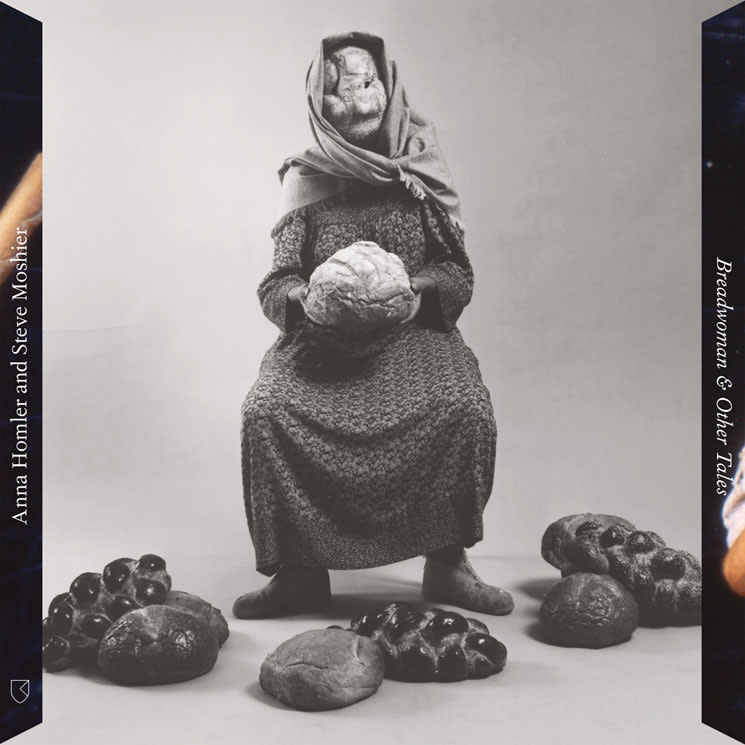Brooklyn label RVNG continues its program of idiosyncratic and avant-garde releases with this reissue of Anna Homler and Steve Moshier's 1985 foray into imagined myth, invented language and ambient electronica. Even by RVNG's standards, Breadwoman and Other Tales is weird. This music sounds not just like it's been unearthed from another time, but from outside of time altogether.
Homler (a performance artist) met Moshier (an avant-garde musician) in L.A.'s underground gallery culture in the early '80s. She had already developed the character of Breadwoman, "a woman so old she's turned to bread," and a form of extra-linguistic incantation and chant that she'd been recording onto cassette. She gave the cassettes to Moshier, who composed ambient soundscapes to accompany them using 2-track and 4-track tape recorders, synths, effects and a sequencer.
The result is a record that feels meaningful despite its nonsensical language, which doesn't sound dated in the least, neither sonically nor stylistically. "Oo Nu Dah" is an early highlight, and finds Moshier looping and multi-tracking Homler's voice into Reich-like echoes that produce unnerving harmonies. "Sirens" is a terrifying excursion into the primordial, with Homler delivering inhuman squeaks, squeals and groans that evoke both birth and death.
If you're looking for a record to give your bohemian wine tasting an air of inscrutable sophistication, this record will do the trick, but it's better than that; it demands and deserves a quiet concentration in order for its transcendental ambitions to flourish.
(RVNG Intl.)Homler (a performance artist) met Moshier (an avant-garde musician) in L.A.'s underground gallery culture in the early '80s. She had already developed the character of Breadwoman, "a woman so old she's turned to bread," and a form of extra-linguistic incantation and chant that she'd been recording onto cassette. She gave the cassettes to Moshier, who composed ambient soundscapes to accompany them using 2-track and 4-track tape recorders, synths, effects and a sequencer.
The result is a record that feels meaningful despite its nonsensical language, which doesn't sound dated in the least, neither sonically nor stylistically. "Oo Nu Dah" is an early highlight, and finds Moshier looping and multi-tracking Homler's voice into Reich-like echoes that produce unnerving harmonies. "Sirens" is a terrifying excursion into the primordial, with Homler delivering inhuman squeaks, squeals and groans that evoke both birth and death.
If you're looking for a record to give your bohemian wine tasting an air of inscrutable sophistication, this record will do the trick, but it's better than that; it demands and deserves a quiet concentration in order for its transcendental ambitions to flourish.
